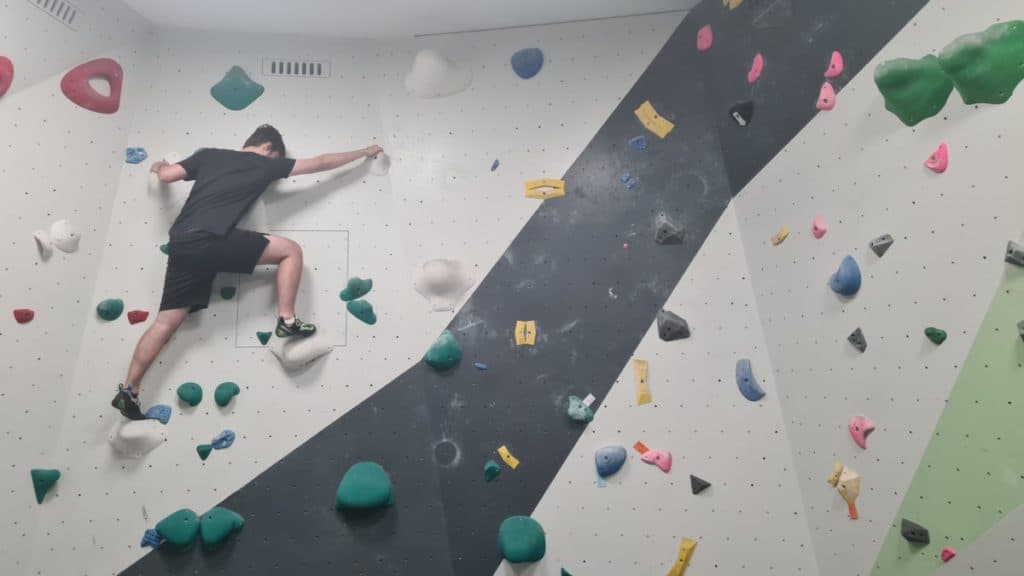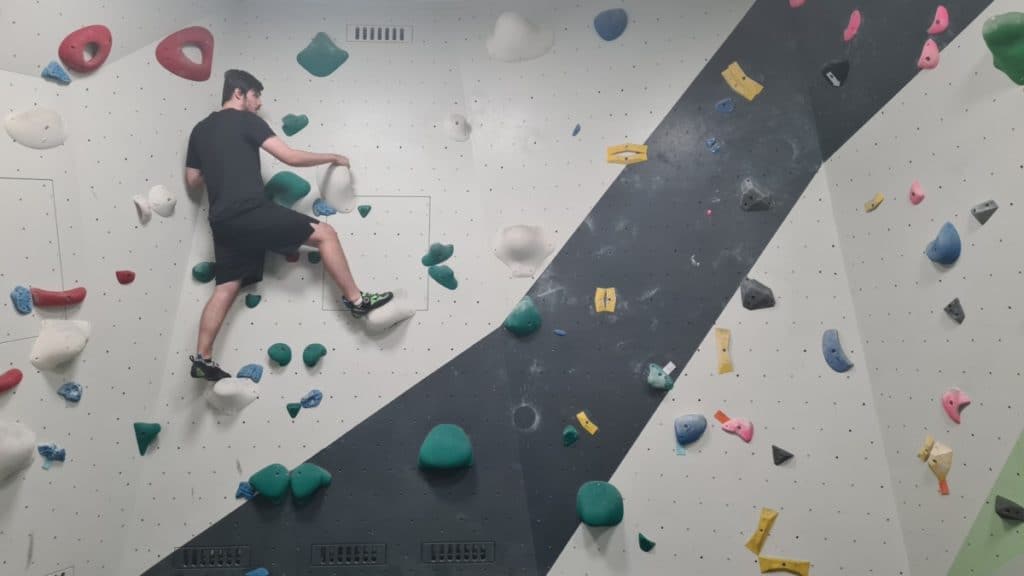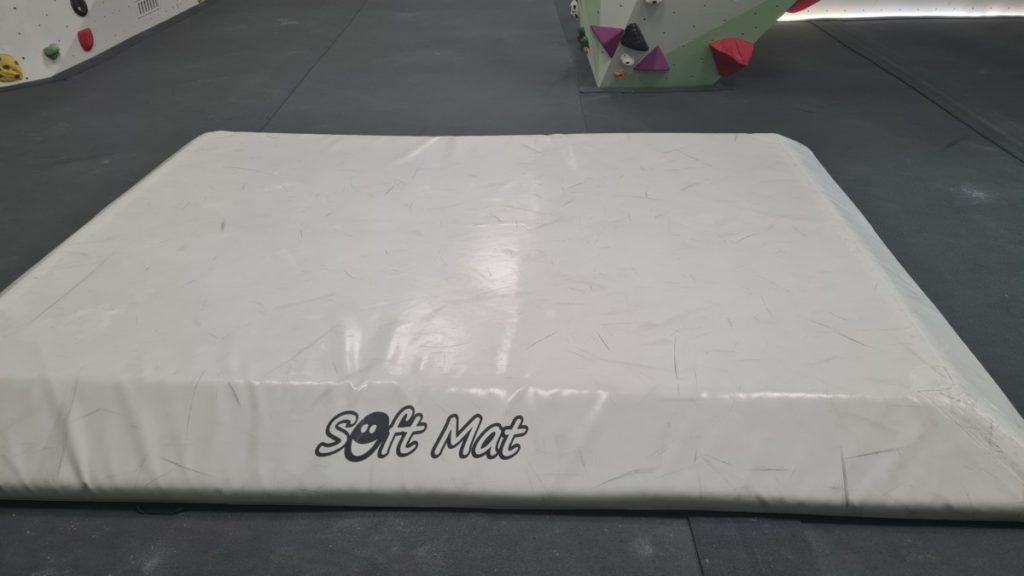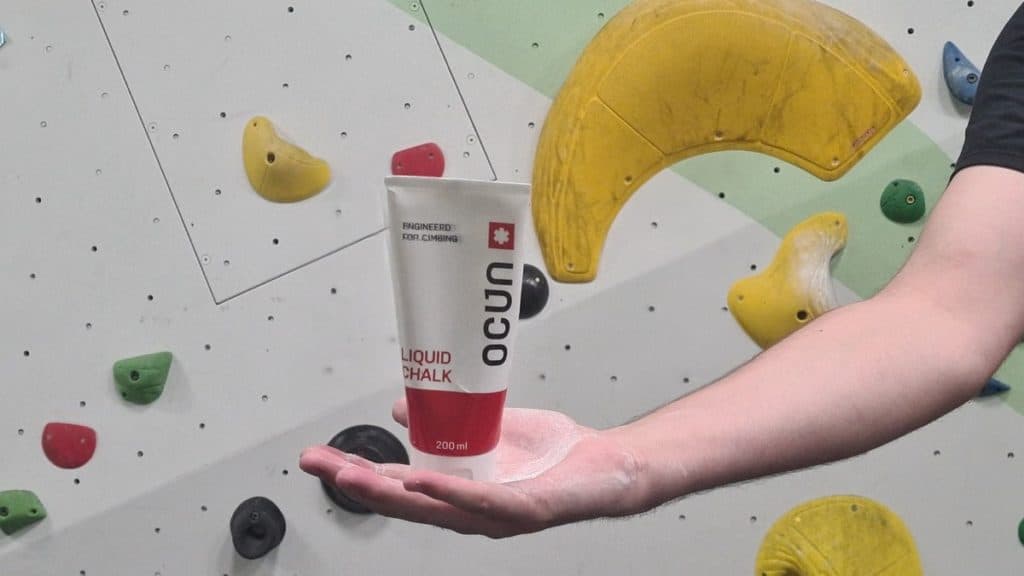
When I went to the climbing gym the first time in 2018 I had no idea what I was doing and had so many questions. Fortunately I was climbing with friends that gave me some useful tips. These tips helped me a lot back then, so they might aswell help you, when you are climbing for the first time or are a complete beginner.
There are many kinds of climbing like bouldering, lead climbing, speed climbing and many more. However, most people are climbing their first time indoors and try lead climbing (climbing big walls with safety equipment that are about 49 feet/15 meters high) or bouldering (climbing walls without safety equipment that are about 13 feet/4 meters high). Because of this most of the tips are focused on general indoor climbing.
1. Only Borrow or Buy The Equipment You Need
When you are climbing for the first time it wont make sense to buy any equipment yet, unless you are absolutely sure you will climb for over a year consistently. Otherwise you should borrow the equipment you need for climbing the first time. Most of the times you can borrow all the things you need directly from the gym and give it back after your climbing session.
Altough you can also climb in your street shoes I would highly recommend to borrow climbing shoes that fit you. It makes the climbing experience so much better and often borrowing climbing shoes is very inexpensive. For bouldering shoes the only equipment you need.
However for lead/sport climbing you will need safety equipment like a harness, a belaying device and a carabiner. In most gym borrowing this stuff is also very cheap, so it’s not a big deal. Everything else like a chalk brush or a chalk bag are things you don’t need for climbing the first time.
2. Be Aware, That Climbing is Way Harder Than it Looks
The first time you are climbing you will most likely not be able to climb most routes in the gym. In general, climbing looks way easier tan it actually is. This is because you need really special strength in your arms and fingers that only develops over a long period of time. So don’t be demotivated when you are only able to climb the most basic routes.
In the climbing gym every route has a grade that describes how difficult it is to climb. The most common grade system is the V scale, that goes from V0 all the way up to V17. Some gyms also offer VB’s (B stands for beginner or basic) that are below the V0’s.
When you are climbing for your first time you will probably only be able to climb routes up to a V1 or even only a V0. So you shouldn’t look too much on grades when first starting to climb and just have fun. However, If you are interested how long it takes to move up through the grades and how to do it as effective as possible click here.

3. Get Tighter Climbing Shoes Than You Think
For climbing you will need very tight shoes, so your feet almost have direct contact with the holds. This way you can stand better on the wall. However, this is not as important for beginners, because the foot holds not that tiny yet and still have a apretty big surface to stand on.
Altough you might not need tight climbing shoes in the beginning, it is good to get used to it and it will be way more comfortable to climb with them than with normal street shoes. When comparing climbing shoes with street shoes, you want to borrow the climbing shoes about on size smaller than your normal shoe size.
So if you think the climbing shoes are good for you to walk in, they are probably still a size too big. The toes should have direct contact with the shoe and there shouldn’t be any space in it. Make sure that the shoes don’t hurt, but you also can’t walk in them comfortably, as they are only made to climb with.
4. Avoid Falling And Put a Mat in The Falling Zone
Especially if you plan on bouldering you have to learn how to fall in order to prevent injuries. Altough the ground is pretty soft in the most gyms, you are still 13 feet (4 meters) up in the air when climbing up. Because learning how to fall and land without injuring yourself can take a while, I generally would advice you downclimb every route once you finished it, until you can jump down from a safe distance.
Or atleast put a soft mat in the falling zone, in case you are out of power and have to jump down. Try to land on your back when falling onto the mat, as this is the safest way. However, there are also other safe ways to get down from a climbing wall you can read about here. If you want to learn how you correctly jump down from a bouldering wall click the link aswell.

5. Try to Figure Out Which Holds Are For The Feet
Many beginners don’t use their feet enough when climbing and solely rely on their upper body strength, which makes it way harder for them. So try actively to use your feet aswell by identifying which holds of the route are for your feet and which are for your hands.
Generally saying most of the times foot holds are the ones that are too bad to hold for your hands, but you can still easily stand on. However, in beginner routes often holds can be used for hands and feet, because they are so good. So don’t get confused about that.
As a general rule I would advice you to move up your feet first and then grab the next hold. When you are climbing for the first time you will often try to already reach the next few holds when your feet are still down at the starting holds. So try to actively put up for feet first, as this makes reaching the next holds way easier.
6. Try to Avoid Peak Times in The Climbing Gym
It can be very demotivating when you are climbing for your first time and have to wait 5 minutes for every new attempt, because other people are climbing the same route. Or you can’t try routes that you would like to, because other people are already standing in front of it.
Because of this you should try to avoid peak times when climbing for the first time and plan to go to the climbing gym when it’s not that crowded. Most of the times the peak times are from 5 to 8 p.m. during the week and from 1 to 3 p.m. on the weekends.
If you can manage to climb earlier or later than that you can freely chose the routes you want to climb and don’t have to wait for other people. From my personal experience I can recommended to climb early on the weekends, because there are only a few people there already and it is a great start into to weekend.
However, if you are unsure which are the peak times in your gym, just google the name of it and when you scroll down you can see which are the peak times on which day of the week.
7. Also Use Chalk For The Easy Routes
Altough you might not be sure yet, if you want to climb again or if this is a one time thing, you should probably buy a bit of chalk. Chalk is pretty inexpensive is very useful to protect the skin on your hands from injuries that are likely to occur for beginners as they still have soft hands. It also gives you a better grip on the holds and improves the genral climbing experience like that.
For normal dry chalk you might aswell want to buy a chalk bag, where you can put the chalk in. If you don’t want to spend so much money on that, you can also buy liquid chalk, which comes in a tube, where no additional chalk bag is needed.
To learn how to use liquid chalk correctly and what the differences to dry chalk are click here. As a general rule I would recommended to chalk up before every attempt, so you keep your grip and your skin protected.

8. Only Climb as Long as You Feel Comfortable
Climbing applies pretty big pressures on your tendons, bones and joints, which your body is very unused to. Because of this you shouldn’t try too hard when you are climbing for the first time and immediately stop climbing when you feel pain. Don’t ignore the pain, because when you keep climbing it will most likely just get worse and you will injure yourself even more.
To prevent injuries you should only climb as long as you feel comfortable doing it and stop climbing when you feel exhausted. Don’t let anybody tell you to climb one more route, altough you don’t feel comfortable doing it anymore. This will just increase the risk of injuring yourself and also won’t make that much fun.
For your first climbing session you should probably aim for about 60-90 minutes of climbing, depending on how long you rest inbetween your attempts. If you already feel exhausted after 30 minutes thats okay aswell, just try to have fun climbing.
9. Find a Climbing Partner That is a Little Better Than You
First of all climbing together or with a group is much more fun than climbing alone, so try to find a partner for climbing your first time. When you have a partner that is already a bit more experienced than you are, which means he already climbed a few times, he can also help you with getting started and answer your questions.
Ideally, your climbing partner isn’t already climbing for years or has no experience at all. If possible, find somebody how just started climbing, as this person can relate to most of your problems that will occur and can answer your questions, because he can still remember when the climbed for the first time.
If you can’t find a climbing partner you can also ask people in the gym, how to climb a route or ask them your questions. Most of them will be happy to help and share their experiences with you.
10. Try To Avoid Bending Your Arms
This is the classic beginner tip for climbing, but it’s so useful, which is why I think it’s worth to mention. Almost everybody bends his arms when climbing for the first time to pull yourself up. I also did this mistakes for the first few times I climbed, until my friend told me to keep my arms straight.
Keeping your arms staright and relaxed when hanging on a hold requires much less strength than bending your arms while holding yourself. Altough this can take some time to fix, because it doesn’t feel natural, try to get it right from the beginning.
It is okay if you don’t do it all the time, just try to actively think about it, as it makes things way easier for you when climbing. If you continue climbing, you will learn it over the time anyway, so don’t be demotivated if you catch yourself doing it in the beginning.
